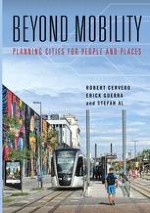2017 | OriginalPaper | Chapter
9. The Global South
Authors : Robert Cervero, Erick Guerra, Stefan Al
Published in: Beyond Mobility
Publisher: Island Press/Center for Resource Economics
Activate our intelligent search to find suitable subject content or patents.
Select sections of text to find matching patents with Artificial Intelligence. powered by
Select sections of text to find additional relevant content using AI-assisted search. powered by
